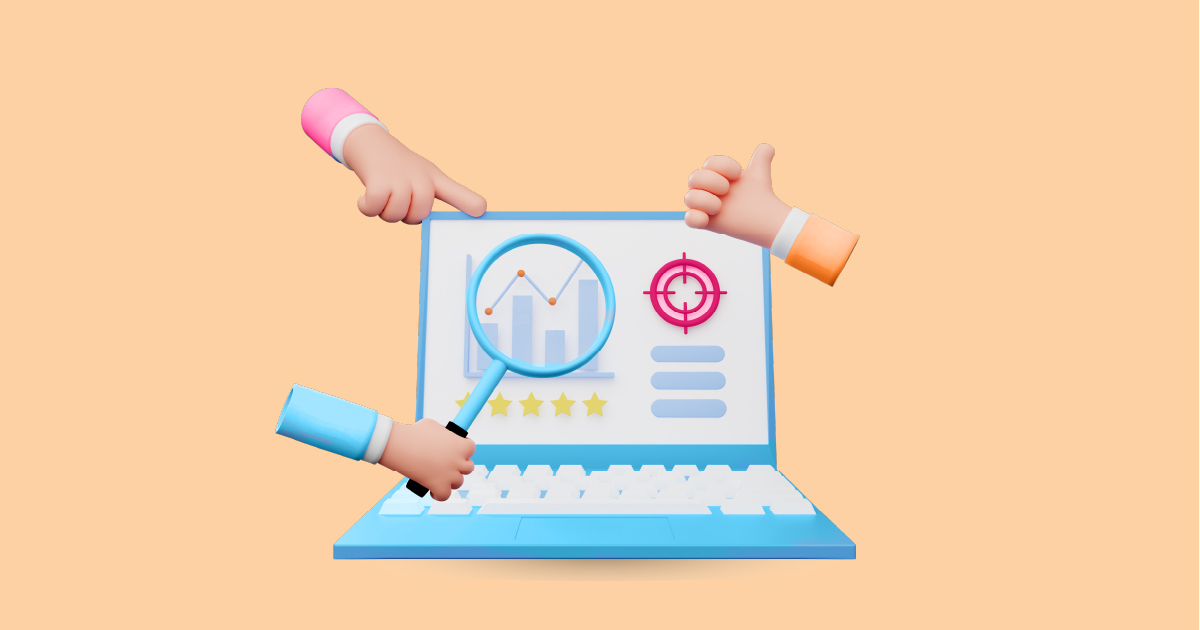In today’s fast-paced digital landscape, maintaining a strong online presence and managing your brand’s reputation is more crucial than ever. With the vast amount of content circulating on the internet, keeping track of how your brand is perceived can be overwhelming. This is where PR media monitoring tools come into play.
Introduction to PR Media Monitoring Tools

1. What are PR Media Monitoring Tools?
PR media monitoring tools are software platforms designed to track, analyze, and report on mentions of your brand, products, or keywords across various media channels, including traditional news outlets, social media platforms, blogs, and forums.
2. Importance of PR Media Monitoring
In the age of social media and instant communication, news spreads rapidly, and public perception can change in an instant. PR media monitoring allows companies to stay informed about what is being said about their brand in real-time, enabling them to respond promptly to any positive or negative mentions.
Features of PR Media Monitoring Platforms
1. Real-time Monitoring
One of the key features of PR media monitoring platforms is their ability to provide real-time alerts whenever your brand mentioned online. This allows you to stay on top of breaking news and emerging trends, giving you the opportunity to respond quickly.
2. Comprehensive Coverage
PR media monitoring platforms offer comprehensive coverage across a wide range of media channels, including print, broadcast, online news sites, social media platforms, and blogs. This ensures that you get a complete picture of how your brand is being portrayed across different channels.
3. Sentiment Analysis
Many PR media monitoring tools use advanced sentiment analysis algorithms to determine the tone and context of mentions. This allows you to gauge whether mentions are positive, negative, or neutral, helping you to identify potential PR crises before they escalate.
4. Competitive Analysis
In addition to monitoring your brand, PR media monitoring tools also allow you to track your competitors’ mentions and activities. This can provide valuable insights into their marketing strategies and help you identify areas where you can differentiate yourself.
5. Customizable Reports
PR media monitoring platforms typically offer customizable reporting features that allow you to generate tailored reports based on your specific KPIs and objectives. This makes it easy to track your progress over time and demonstrate the impact of your PR efforts to key stakeholders.
Benefits of Using PR Media Monitoring Platforms
1. Insights into Brand Reputation
By monitoring mentions of your brand online, you can gain valuable insights into how your brand perceived by the public. This allows you to identify areas where your brand is excelling and areas where there may be room for improvement.
2. Crisis Management
In the event of a PR crisis, time is of the essence. PR media monitoring tools allow you to detect and respond to negative mentions quickly, helping you to mitigate the damage to your brand’s reputation.
3. Audience Engagement
PR media monitoring tools can also help you identify opportunities to engage with your audience in meaningful ways. Whether it’s responding to customer feedback or joining conversations about your industry, being actively involved in online discussions can help strengthen your brand’s relationship with its audience.
4. Tracking ROI
Measuring the ROI of PR activities can be challenging, but PR media monitoring platforms make it easier by providing data-driven insights into the impact of your PR efforts. By tracking metrics such as brand mentions, website traffic, and social media engagement, you can demonstrate the value of your PR initiatives to your organization.
5. Influencer Identification
Identifying and partnering with influencers can be a highly effective way to amplify your brand’s message and reach new audiences. PR media monitoring tools can help you identify relevant influencers in your industry and track their impact on your brand’s reputation and visibility.
How to Choose the Right PR Media Monitoring Tool
1. Define Your Objectives
Before selecting a PR media monitoring tool, it’s important to clearly define your objectives and what you hope to achieve. Whether it’s brand reputation management, crisis monitoring, or competitor analysis, having a clear understanding of your goals will help you choose the right tool for your needs.
2. Assess Features and Compatibility
Different PR media monitoring tools offer different features and capabilities, so it’s important to assess how well each tool aligns with your requirements. Look for features such as real-time monitoring, sentiment analysis, and customizable reporting that are essential for effectively managing your brand’s reputation.
3. Consider Budget and Scalability
PR media monitoring tools come in a range of price points, so it’s important to consider your budget and scalability needs when making a decision. While some tools may offer advanced features, they may also come with a higher price tag, so be sure to weigh the costs against the benefits.
4. Look for User-Friendly Interface
Ease of use is another important factor to consider when choosing a PR media monitoring tool. Look for a tool that has an intuitive interface and easy-to-use features, as this will help ensure that your team can quickly get up to speed and start deriving value from the tool.
5. Check Customer Support
Finally, be sure to evaluate the level of customer support provided by the vendor. In the event that you encounter any issues or have questions about the tool, having access to responsive and knowledgeable customer support can make a big difference in your overall experience.
Top PR Media Monitoring Tools in the Market
1. Mention
Mention is a comprehensive media monitoring tool that offers real-time monitoring, sentiment analysis, and customizable reporting features. With Mention, you can track mentions of your brand across social media, news sites, blogs, and more, helping you stay informed about what’s being said about your brand online.
2. AIM Insights
AIM Insights is another popular PR media monitoring tool that offers comprehensive coverage across a wide range of media channels. In addition to monitoring mentions of your brand, AIM Insights also offers competitive analysis and influencer identification features to help you stay ahead of the competition.
3. Cision
Cision is a leading provider of PR and media intelligence software, offering a suite of tools for monitoring, analyzing, and engaging with media contacts. With Cision, you can track mentions of your brand across traditional and social media channels, as well as identify relevant influencers and journalists to reach out to.
4. Brandwatch
Brandwatch is a social listening and analytics platform that provides insights into consumer behavior and market trends. With Brandwatch, you can monitor mentions of your brand across social media platforms, blogs, forums, and more, helping you understand how your brand is perceived by your target audience.
5. Critical Mention
Critical Mention is a real-time media monitoring and analytics platform that offers comprehensive coverage across broadcast, online, and social media channels. With Critical Mention, you can track mentions of your brand in news broadcasts, online articles, and social media posts, helping you stay informed about what’s being said about your brand across different media channels.
Case Studies with Record-Breaking Results
Case Study 1: Nike’s Viral Campaign During the Olympics
When Nike launched its Olympic campaign, its monitoring strategy was instrumental in capturing real-time engagement. Nike used a PR media monitoring tool to track mentions across social media, blogs, and news sites during key moments, enabling them to respond to both positive and negative feedback almost instantly. As a result, Nike’s hashtag for the event trended worldwide, leading to a 30% increase in brand mentions over the course of the campaign. This data allowed Nike to refine its future marketing strategies, setting a new benchmark for engagement in real-time campaigns.
Case Study 2: Small Business Success with Local Media Monitoring
A local coffee chain used a PR media monitoring tool to track customer sentiment across social media and review sites. By analyzing sentiment and feedback in real-time, they were able to quickly respond to customer concerns, such as long wait times or menu feedback. After implementing changes based on these insights, the brand saw a 40% boost in positive reviews and a 25% increase in foot traffic. This case illustrates how PR media monitoring tools can help even small businesses improve their customer experience and reputation management.
Case Study 3: Crisis Averted for a Global Tech Firm
A major tech company faced potential backlash over a product issue that surfaced on social media. The brand’s PR team used their monitoring tool to detect and analyze mentions quickly, allowing them to issue a statement and initiate corrective actions within hours of the first mention. Due to the rapid response, the brand minimized negative sentiment and saw a 20% increase in customer trust, as evidenced by positive feedback and shares from key influencers. This case highlights the importance of timely responses enabled by PR media monitoring tools in crisis management.
Influencer Quotes and Tweets
“In today’s digital age, PR media monitoring tools are essential for any brand serious about managing its reputation and driving engagement.” — Gary Vaynerchuk, Entrepreneur & Social Media Influencer
“PR is no longer just about press releases; it’s about understanding public sentiment in real-time. Media monitoring tools are a game-changer in helping brands stay relevant.” — Neil Patel, Digital Marketing Expert
“Watching the public’s response in real-time has helped me pivot and refine my content instantly—brands can leverage this too with the right tools.” — Mari Smith, Facebook Marketing Expert
Tweet by a Digital Marketing Guru: “Tracking my brand mentions has been a game-changer. Real-time insights make it easy to spot trends, respond to customers, and keep the community engaged. #MediaMonitoring #DigitalPR”
Conclusion
In today’s digital age, maintaining a strong online presence and managing your brand’s reputation is more important than ever. PR media monitoring tools provide valuable insights into how your brand is perceived by the public, helping you to stay informed, respond quickly to emerging trends and crises, and ultimately enhance your brand’s reputation and credibility.
Ready to take your PR strategy to the next level? Request a demo from AIM Technologies today and see how our advanced PR media monitoring tools can help you stay ahead of the competition and drive meaningful results for your business.
FAQs
What is PR media monitoring?
PR media monitoring is the process of tracking and analyzing mentions of your brand, products, or keywords across various media channels, including traditional news outlets, social media platforms, blogs, and forums.
How do PR media monitoring tools work?
PR media monitoring tools use advanced algorithms to crawl and index content from a wide range of media channels, allowing you to track mentions of your brand in real-time and analyze sentiment and context.
Can PR media monitoring tools track social media?
Yes, most PR media monitoring tools offer coverage across social media platforms, allowing you to monitor mentions of your brand, products, or keywords on sites like Facebook, Twitter, Instagram, and LinkedIn.
Are PR media monitoring tools only for large corporations?
No, PR media monitoring tools are suitable for businesses of all sizes. Whether you’re a small startup or a multinational corporation, monitoring your brand’s reputation and staying informed about what’s being said about your brand online is essential for success.
How often should PR media monitoring be done?
The frequency of PR media monitoring depends on your objectives and the nature of your business. Some companies may choose to monitor their brand in real-time, while others may opt for daily, weekly, or monthly monitoring depending on their needs and resources.




